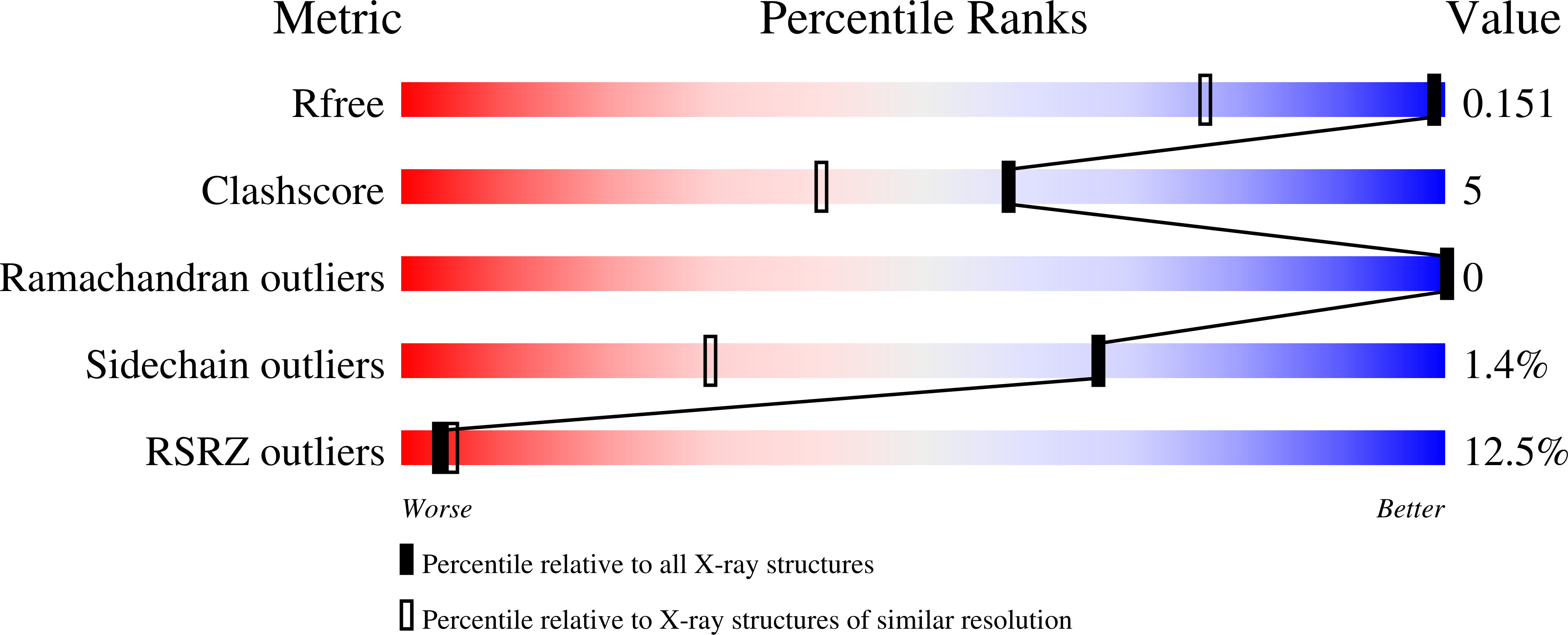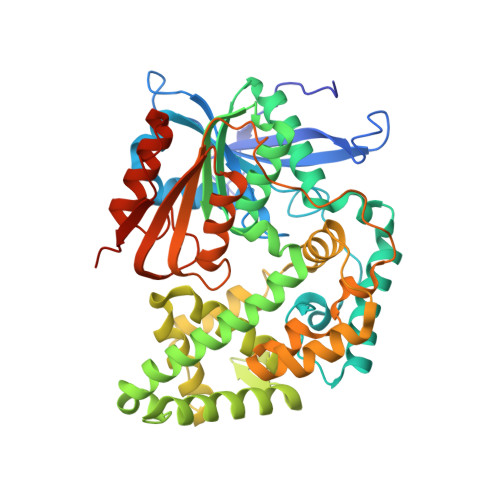Intramolecular C-C Bond Formation Links Anthraquinone and Enediyne Scaffolds in Tiancimycin Biosynthesis.
Gui, C., Kalkreuter, E., Liu, Y.C., Adhikari, A., Teijaro, C.N., Yang, D., Chang, C., Shen, B.(2022) J Am Chem Soc 144: 20452-20462
- PubMed: 36279548
- DOI: https://doi.org/10.1021/jacs.2c08957
- Primary Citation of Related Structures:
8E18, 8E19 - PubMed Abstract:
First discovered in 1989, the anthraquinone-fused enediynes are a class of DNA-cleaving bacterial natural products composed of a DNA-intercalating anthraquinone moiety and a 10-membered enediyne warhead. However, until recently, there has been a lack of genetically amenable hosts and sequenced biosynthetic gene clusters available for solving the biosynthetic questions surrounding these molecules. Herein, we have identified and biochemically and structurally characterized TnmK1, a member of the α/β-hydrolase fold superfamily responsible for the C-C bond formation linking the anthraquinone moiety and enediyne core together in tiancimycin (TNM) biosynthesis. In doing so, two intermediates, TNM H and TNM I, in anthraquinone-fused enediyne biosynthesis, containing an unprecedented cryptic C16 aldehyde group, were identified. This aldehyde plays a key role in the TnmK1-catalyzed C-C bond formation via a Michael addition, representing the first example of this chemistry for the α/β-hydrolase fold superfamily. Additionally, TNM I shows sub-nanomolar cytotoxicity against selected cancer cell lines, indicating a new mechanism of action compared to previously known anthraquinone-fused enediynes. Together, the findings from this study are expected to impact enzymology, natural product biosynthesis, and future efforts at enediyne discovery and drug development.
Organizational Affiliation:
Skaggs Graduate School of Chemical and Biological Sciences, Scripps Research, Jupiter, Florida 33458, United States.















